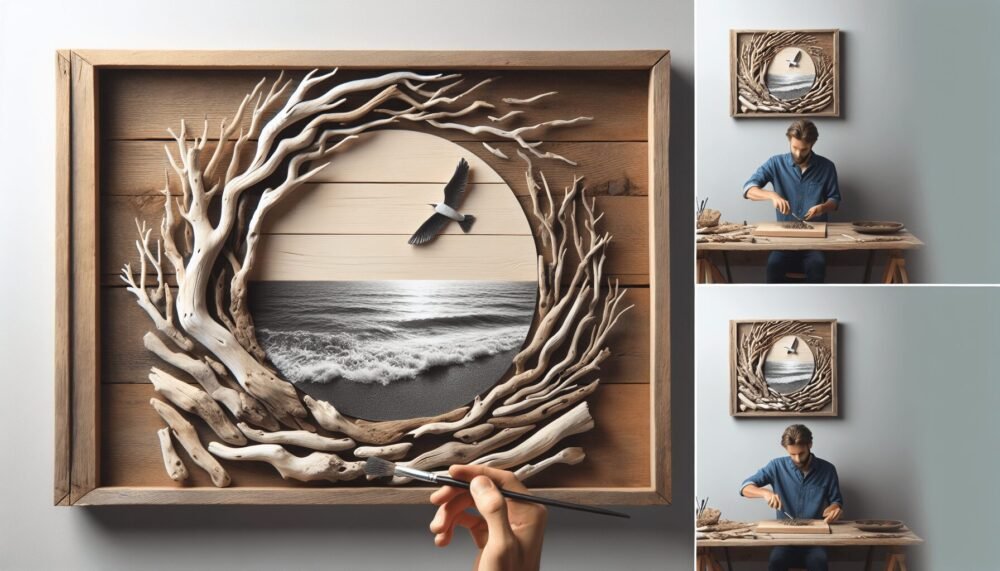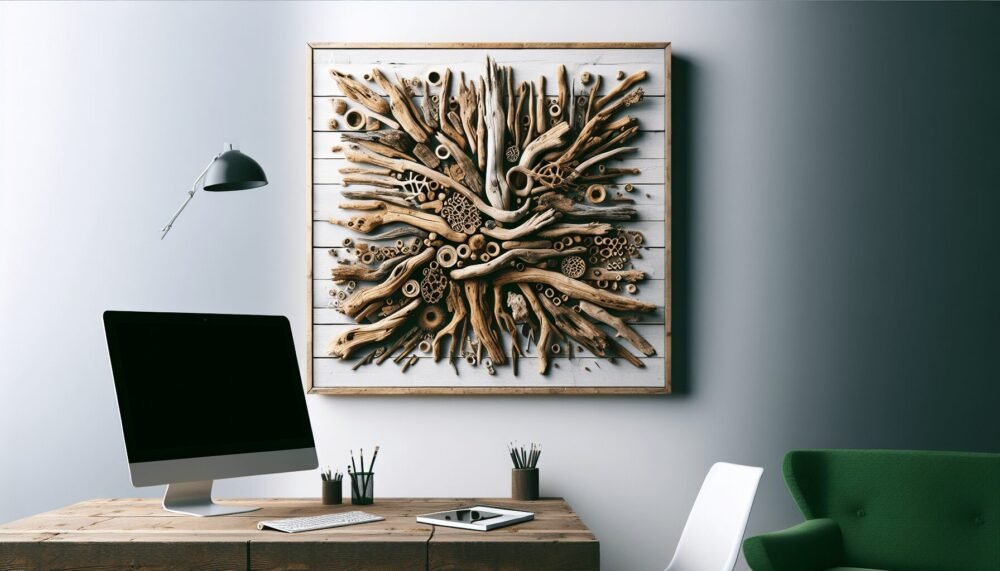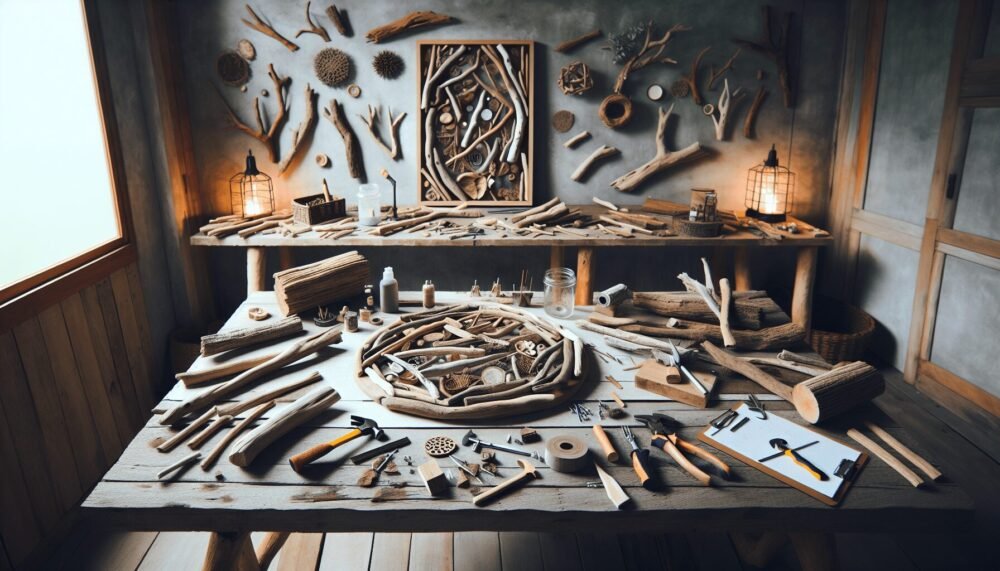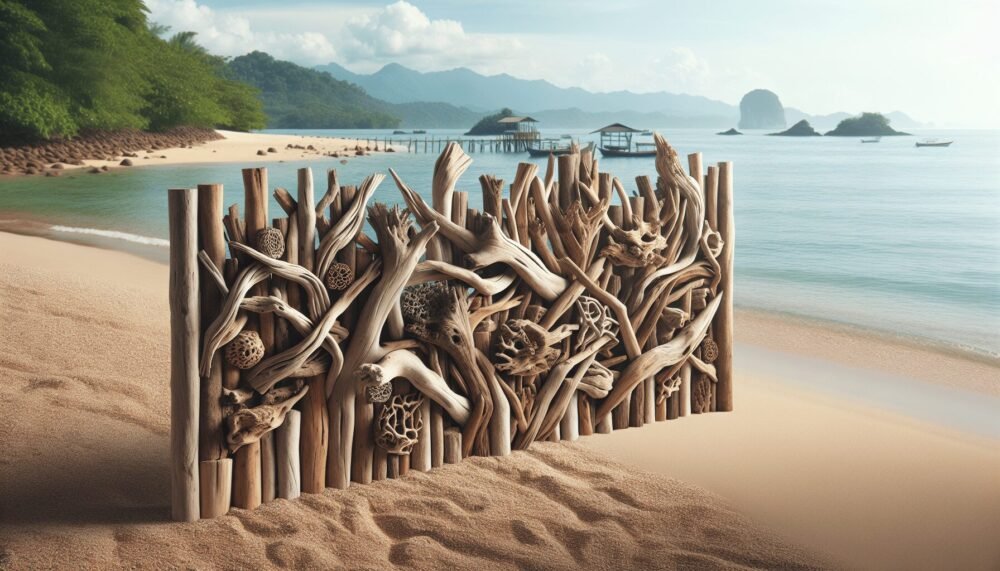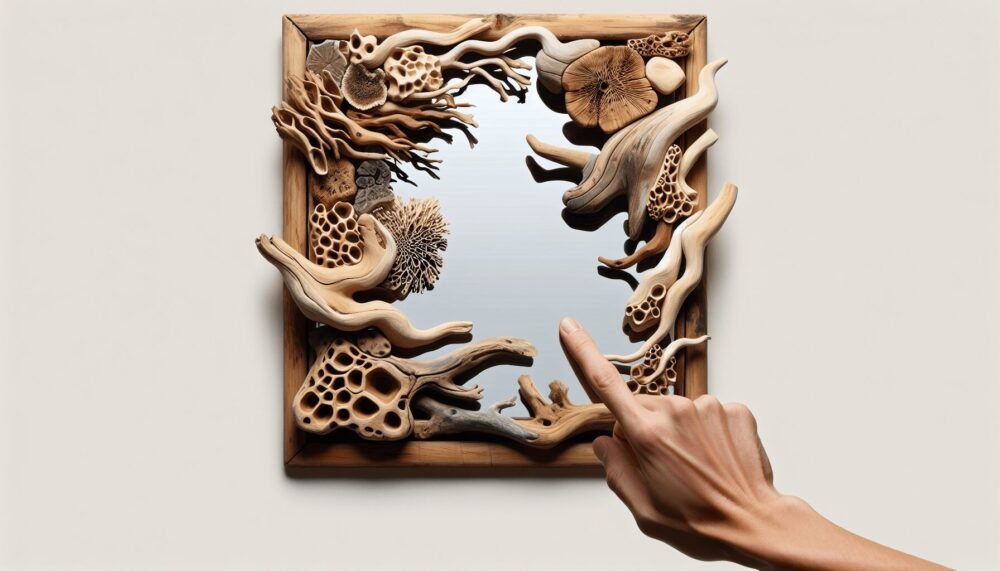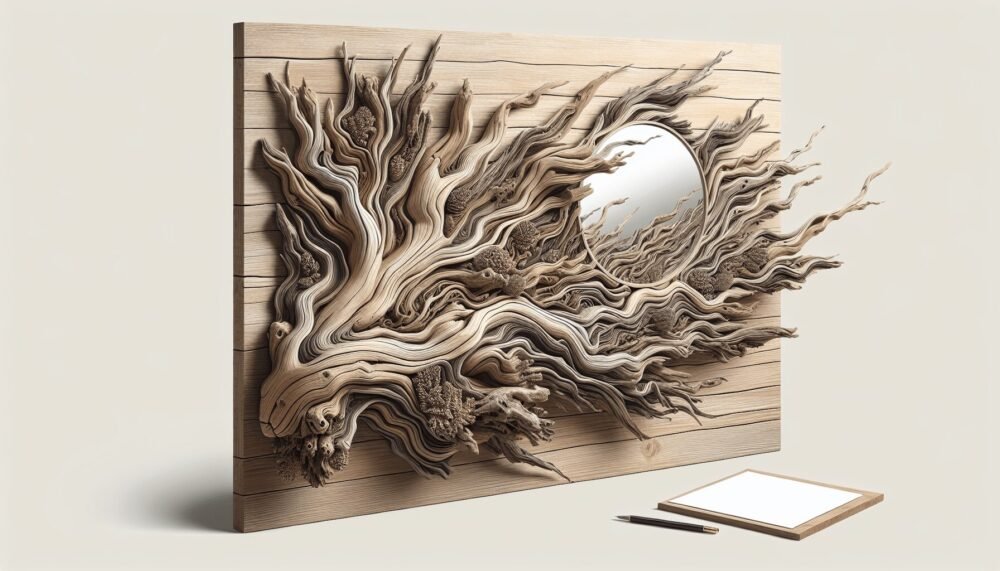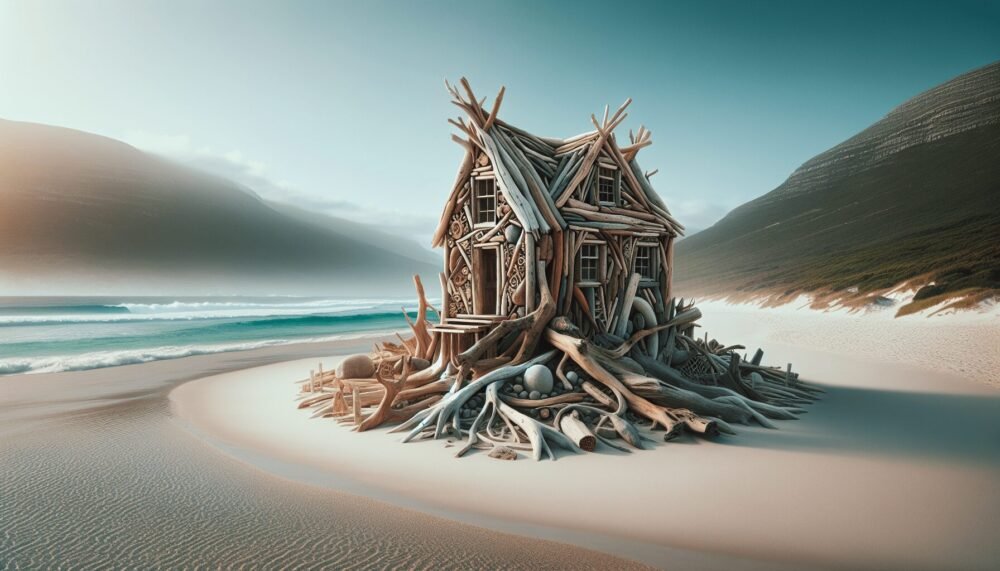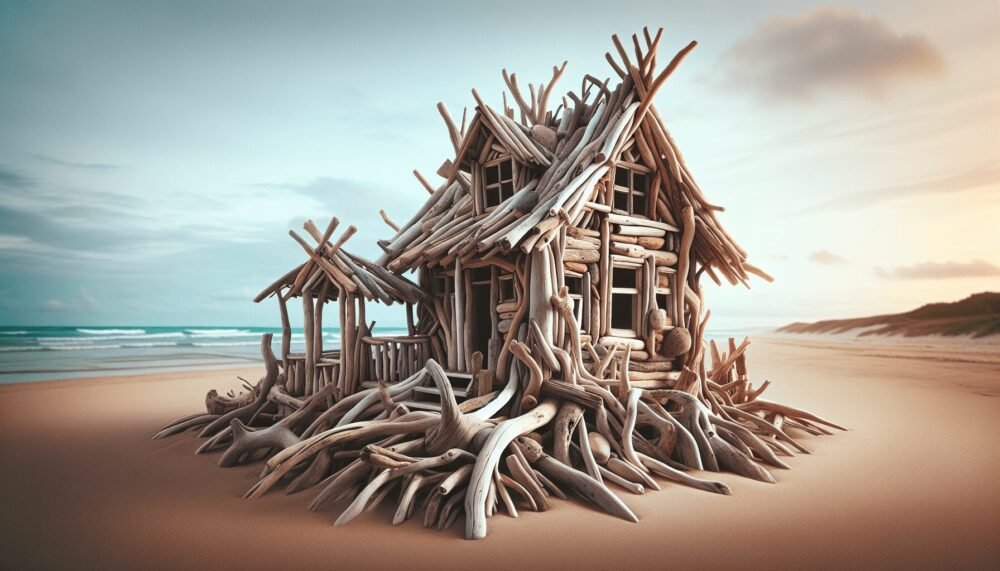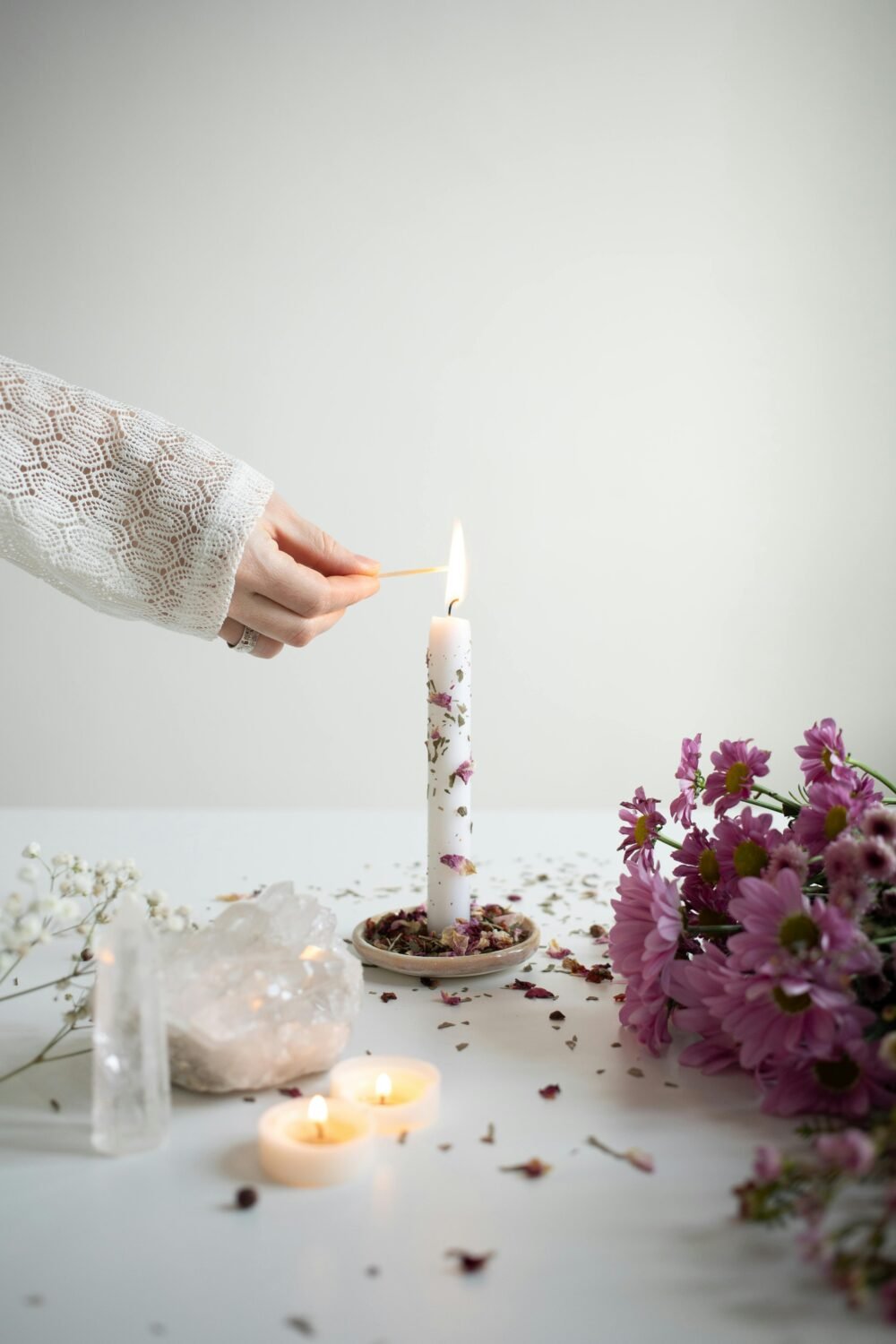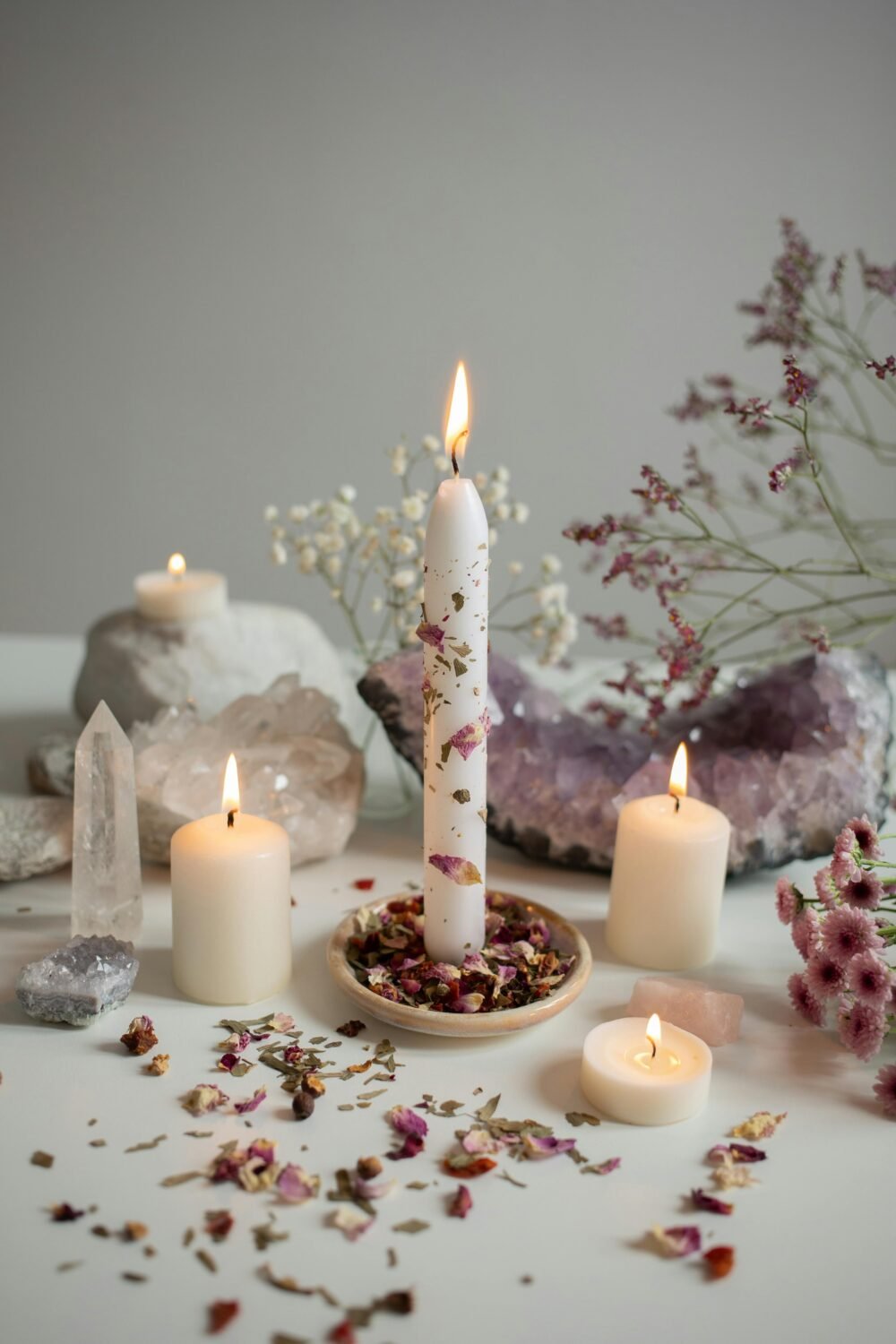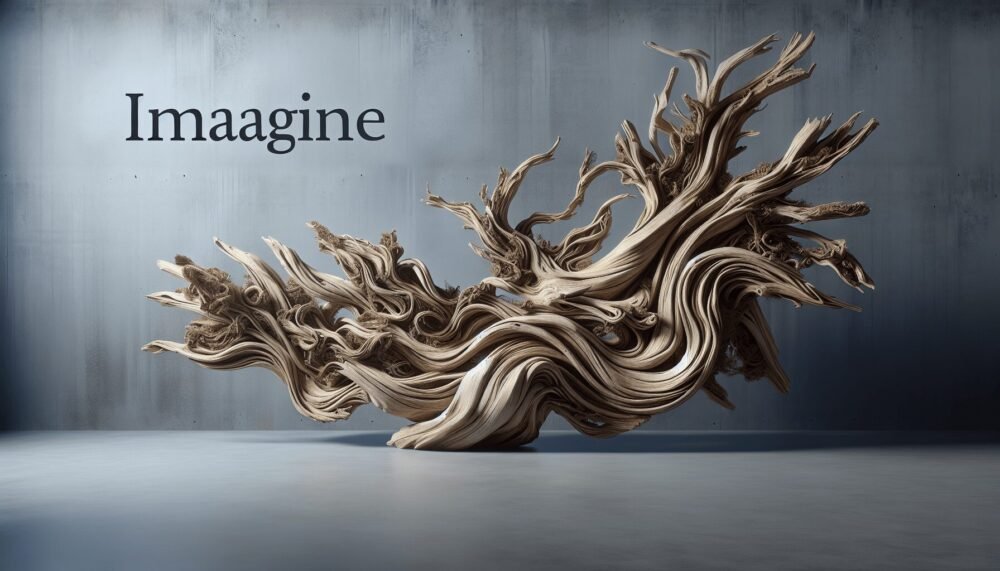Imagine transforming your plain wooden furniture into a stunning piece of art with a captivating driftwood finish. With this unique DIY technique, you can bring a touch of coastal charm and rustic elegance to your home decor. By incorporating the natural beauty of driftwood, you can create a weathered, sun-bleached effect that adds character and warmth to any piece of wood. This simple yet creative process allows you to unleash your inner artist and breathe new life into old furniture. Let’s explore the step-by-step process of achieving the mesmerizing driftwood finish DIY and unveil the secrets behind this popular trend. Get ready to embark on a delightful journey of creativity and craftsmanship.
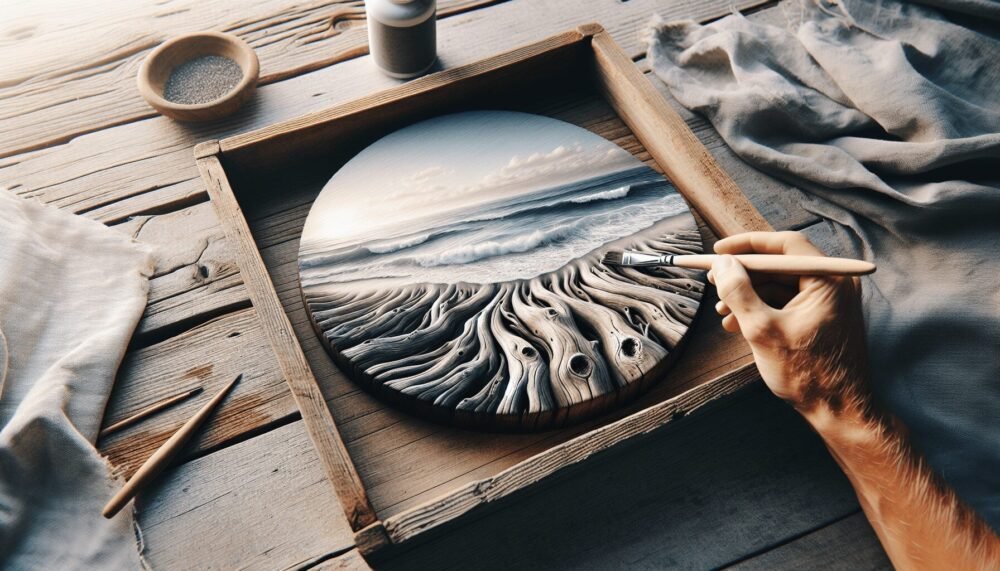
Materials Needed
To start your driftwood finishing project, you will need the following materials:
Sanding block or sandpaper
To prepare the driftwood, you will need a sanding block or sandpaper to smooth out any rough edges and create a clean surface for the finish.
Driftwood pieces
Collect or purchase driftwood pieces of various sizes and shapes that you would like to finish. The unique patterns and textures of driftwood make for beautiful and rustic home decor pieces.
Varnish or paint
Choose between varnish or paint as your finish for the driftwood. Varnish will enhance the natural colors and textures of the wood, while paint allows you to introduce a pop of color or match it with your existing decor.
Brushes
Select a set of brushes suitable for applying varnish or paint. Different brush sizes will come in handy for covering both large and small areas of the driftwood.
Protective coating
To protect the finish and preserve the beauty of your driftwood, you will need a protective coating such as polyurethane. This will help prevent moisture damage and ensure longevity.
Tarp or drop cloth
To protect your work surface, lay down a tarp or drop cloth. This will catch any drips or spills during the finishing process and make clean-up easier.
Optional: wood stain or whitewash paint
If you want to experiment with different finishes and add more character to your driftwood, you can consider using wood stain or whitewash paint. These optional materials can give your driftwood a weathered or aged appearance.
Preparing the Driftwood
Before you can apply the finish to your driftwood, it’s important to prepare it properly. Follow these steps to get your driftwood ready for the finishing process:
Clean the driftwood
Start by cleaning the driftwood to remove any loose dirt or debris. You can use a soft-bristle brush or a cloth to gently scrub the surface. This will ensure that your finish adheres to the wood properly.
Remove any loose dirt or debris
Inspect your driftwood pieces and remove any loose dirt, moss, or other debris. You can use a small brush or compressed air to carefully clean the nooks and crannies of the driftwood.
Sand the driftwood
To achieve a smooth and polished finish, it’s important to sand the driftwood. Use a sanding block or sandpaper to gently sand the surface, concentrating on any rough edges or areas that need smoothing. Sand in the direction of the wood grain for best results.
Smooth out rough edges
If you come across any rough edges or splinters on the driftwood, use sandpaper or a sanding block to carefully smooth them out. This will not only improve the appearance of the finished piece but also make it safer to handle.
Wipe off excess dust
Once you have finished sanding, use a clean cloth or brush to wipe off any excess dust from the driftwood. This will ensure that the finish adheres smoothly and evenly to the surface.
Applying the Finish
Now that your driftwood is prepared, it’s time to apply the finish of your choice. Follow these steps to achieve the desired look for your driftwood:
Choosing the finish
First, decide whether you want to use varnish or paint as your finish. Consider the overall aesthetic you want to achieve and whether you prefer a natural or colored look for your driftwood.
Varnish or paint
If you want to showcase the natural beauty of the driftwood, varnish is a great option. It will enhance the wood’s natural colors and textures while providing a protective coating. On the other hand, if you want to add a pop of color or match the driftwood with your existing decor, consider using paint.
Decide if you want a natural or colored look
Consider the overall look you want to achieve. If you prefer a natural appearance, opt for a clear varnish. For a colored look, choose paint in your desired hue.
Apply the finish
Using a brush or paint applicator, apply the chosen varnish or paint to the driftwood. Make sure to cover all sides and edges for a consistent finish. Apply multiple thin coats rather than one thick coat to avoid drips and uneven drying.
Brush or paint the varnish/color onto the driftwood
For varnish, brush it onto the driftwood in smooth, even strokes, following the direction of the wood grain. If using paint, apply it using a brush or applicator, ensuring full coverage and an even finish.
Allow it to dry between coats
Allow each coat of varnish or paint to dry completely before applying the next. Follow the manufacturer’s instructions for drying times, and be patient to ensure a professional-looking finish.
Optional: Staining or Whitewashing
If you want to add more character and depth to your driftwood, you can consider staining or whitewashing it. These techniques can create unique and eye-catching finishes. Here’s how you can do it:
Staining the driftwood
Choose a wood stain color that complements your decor or desired look. Apply the stain using a brush or cloth, making sure to cover the entire surface of the driftwood. Allow the stain to penetrate the wood for a few minutes before wiping off any excess with a clean cloth. This will create a rich, stained finish that highlights the natural grain patterns of the driftwood.
Choose a wood stain color
When selecting a wood stain color, consider the overall color scheme and style of your space. Darker stains can create a more dramatic and rustic look, while lighter stains can enhance a beachy or coastal vibe. Test the stain color on a small section of the driftwood to ensure it matches your vision.
Apply the stain with a brush or cloth
Using a brush or cloth, apply the wood stain onto the driftwood, making sure to cover all areas evenly. Work in small sections and follow the wood grain for a natural and uniform finish.
Wipe off excess stain
After applying the stain, use a clean cloth to wipe off any excess stain. This will prevent the driftwood from becoming too dark or uneven. Allow the stain to dry according to the manufacturer’s instructions before proceeding to the next steps.
Whitewashing the driftwood
If you prefer a more washed-out or weathered look for your driftwood, whitewashing is a great option. Here’s how you can achieve this effect:
Mix equal parts of water and white paint
Create a whitewash mixture by combining equal parts of water and white paint. Stir well until the mixture is smooth and consistent.
Brush or sponge the mixture onto the wood
Using a brush or sponge, apply the whitewash mixture onto the driftwood. Work in small sections, ensuring full coverage. The mixture will settle into the nooks and crannies of the driftwood, creating a beautiful, weathered appearance.
Wipe off excess whitewash
After applying the whitewash, use a clean cloth to wipe off any excess from the driftwood. This will allow the natural wood grain and texture to show through, adding depth and character to the finished piece.
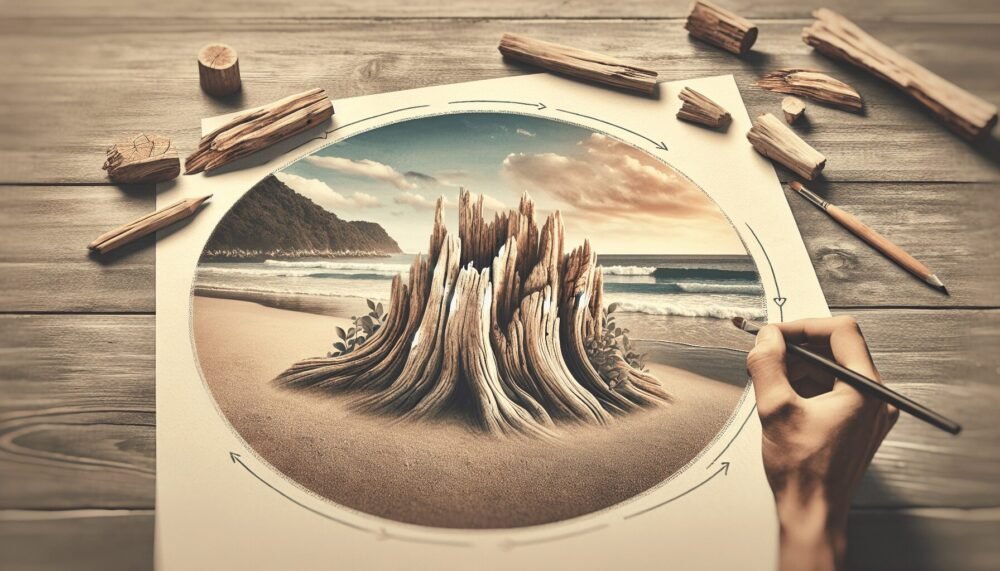
Protecting the Finish
To ensure the longevity of your driftwood and protect the finish, it’s important to apply a protective coating. Follow these steps to keep your driftwood looking beautiful for years to come:
Applying a protective coating
Choose a protective coating such as polyurethane that is suitable for the type of finish you have applied to the driftwood. Polyurethane will provide a durable and water-resistant seal.
Choose a protective coating such as polyurethane
Research and select a protective coating that is specifically designed for the type of finish you have applied to the driftwood. For varnished driftwood, choose a polyurethane varnish. For painted driftwood, choose a protective coating suitable for painted surfaces.
Brush or spray on a thin layer
Using a brush or spray applicator, apply a thin layer of the protective coating onto the driftwood. Make sure to cover all surfaces and edges for comprehensive protection.
Allow it to dry completely
After applying the protective coating, allow it to dry completely according to the manufacturer’s instructions. Avoid touching or moving the driftwood until it is fully cured to prevent any damage to the finish.
Display and Use
Now that your driftwood is finished and protected, it’s time to decide where and how to display it. Consider these suggestions to showcase and utilize your driftwood:
Choosing where to display
Decide whether you want to display your driftwood indoors or outdoors. Consider the style and theme of the room or space where you plan to showcase it.
Indoor or outdoor
Driftwood can be a great addition to various indoor spaces, such as living rooms, bedrooms, or even bathrooms. It can also add a natural and coastal touch to outdoor areas like patios or gardens. Choose a location that enhances the overall aesthetic and ambiance you want to create.
Consider the style and theme of the room or space
Think about the existing style and theme of the room or space where you will display the driftwood. It should complement and enhance the overall decor and create a cohesive look. For example, a piece of driftwood with a natural finish can add a rustic touch to a farmhouse-style room, while a brightly painted driftwood can be a statement piece in a vibrant and modern space.
Using the driftwood
Apart from displaying the driftwood as standalone decor, you can also use it in various creative ways:
Decorate with other items
Arrange the driftwood along with other decorative items such as seashells, candles, or framed photos. This can create a visually appealing and personalized display.
Create a centerpiece
Place a group of driftwood pieces in the center of a dining table or coffee table to create a unique centerpiece. You can add additional elements like flowers or small trinkets to enhance the visual impact.
Make a wall hanging
Attach a string or wire to the driftwood and hang it on a wall. This can serve as a stylish and eye-catching piece of wall art. You can even hang smaller driftwood pieces together to create a larger statement piece.
Maintenance
To keep your driftwood looking its best and maintain its finish, you need to follow proper maintenance practices. Consider these tips:
Dust regularly
Dust the driftwood regularly using a soft cloth or duster to prevent the buildup of dirt and debris. This will help maintain its appearance and prevent any damage to the finish.
Wipe with a damp cloth
If you notice any stains or spills on the driftwood, wipe them off immediately with a damp cloth. Avoid using harsh chemicals or abrasive cleaners, as they can damage the finish or the wood itself.
Touch up the finish if needed
Over time, the finish on the driftwood may wear off or become dull. If you notice any areas that need touching up, lightly sand the affected area and reapply the appropriate finish, following the same steps as before.
Reapply protective coating if necessary
Depending on the exposure to sunlight, humidity, and other environmental factors, the protective coating on the driftwood may wear off. If you notice any signs of wear, lightly sand the surface, remove any dust, and apply a fresh coat of protective coating.
Safety Precautions
When working on your driftwood finishing project, it’s essential to prioritize safety. Follow these precautions to ensure a safe and enjoyable DIY experience:
Work in a well-ventilated area
To avoid inhaling fumes from the varnish or paint, make sure to work in a well-ventilated area. Open windows or use a fan to improve air circulation.
Wear protective gloves and goggles
Protect your hands and eyes by wearing gloves and goggles. This will prevent any accidental injuries from splinters, sharp edges, or any chemicals used during the finishing process.
Avoid breathing in fumes from varnish or paint
As you work with varnish or paint, be mindful of the fumes they emit. Avoid breathing in these fumes by ensuring proper ventilation and wearing a mask if needed.
Dispose of any waste materials properly
Dispose of any waste materials, such as used brushes, sanding dust, or empty containers, properly. Follow local regulations for the disposal of these materials to minimize environmental impact.
Tips and Tricks
To further enhance your driftwood finishing project, consider these tips and tricks:
Experiment with different finishes
Don’t be afraid to experiment with different finishes and techniques. Try mixing varnish and stain for a unique look or combine multiple layers of whitewash for a weathered effect. The beauty of DIY projects is the opportunity to explore and create your own unique style.
Combine varnish and stain for a unique look
If you want to add depth and character to your driftwood, consider combining varnish and stain. Apply a layer of varnish to enhance the natural colors and textures of the wood, and then apply a wood stain in a complementary color on top. This will create a unique and eye-catching finish.
Use multiple layers of whitewash for a weathered effect
To achieve a weathered or aged look, apply multiple layers of whitewash. Allow each layer to dry before applying the next, and vary the intensity of the whitewash to create depth and dimension. This technique can give your driftwood a beautifully worn and coastal appearance.
Try different techniques for distressing the driftwood
If you want to create a more rustic or distressed look for your driftwood, try different distressing techniques. You can use sandpaper or a wire brush to create dents, scratches, or rough patches on the surface. This will add texture and a sense of history to your finished piece.
Conclusion
Driftwood finishing is a versatile DIY project that allows you to transform natural materials into unique works of art. By following the steps outlined in this article, you can create beautiful and rustic home decor pieces that reflect your personal style. From choosing the right materials and finishes to displaying and maintaining your driftwood, each step contributes to the overall aesthetic and longevity of your finished pieces. So, unleash your creativity and enjoy the rewarding process of turning ordinary driftwood into extraordinary decor.
